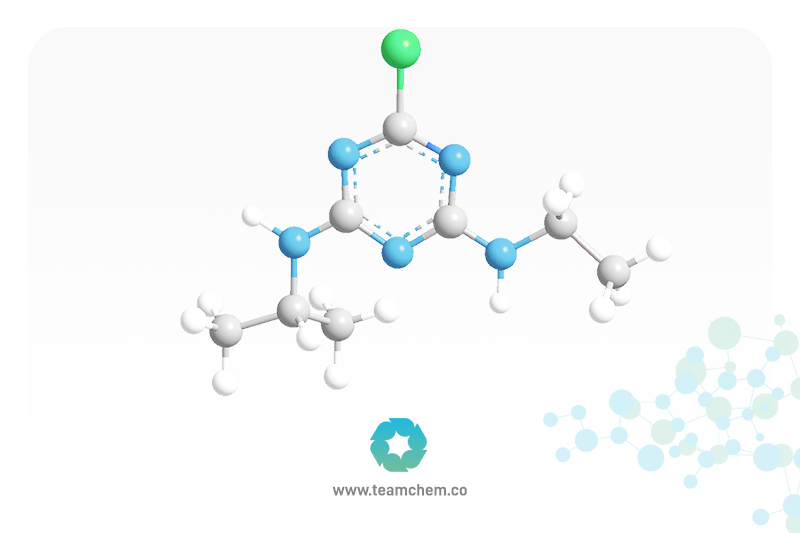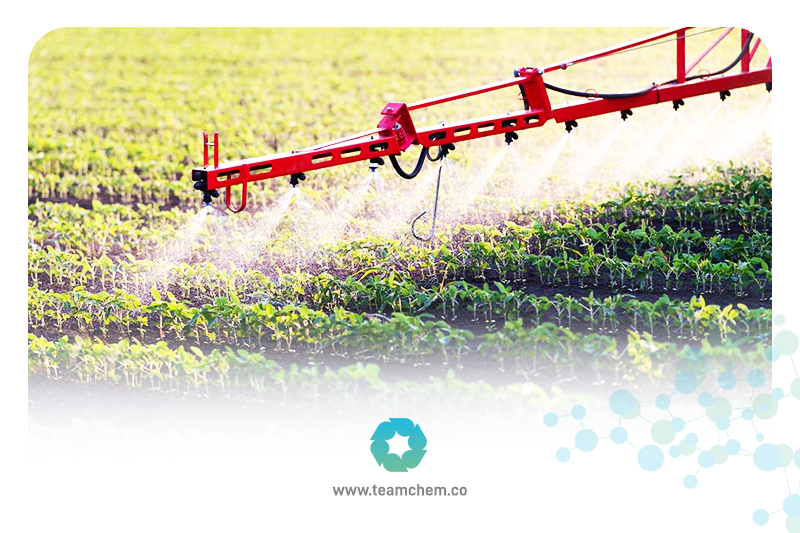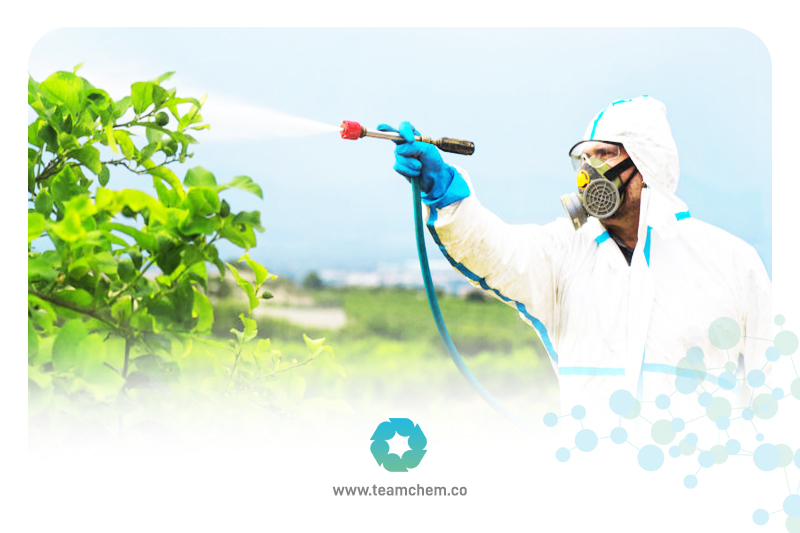Triazine Pesticides
Hailed by some as essential for crop yields and criticized by others for their environmental impact, Triazine pesticides have been a cornerstone of weed control strategies in many parts of the world since the early 1950s. But as their usage grew, so did concerns about their potential impacts on the environment and human health. This comprehensive guide explores Triazine pesticides, their benefits, drawbacks, history, safety considerations, alternatives, and the future of weed management.
What are Triazine Pesticides?
Triazine pesticides belong to a class of herbicides that share a common six-membered ring chemical structure containing three nitrogen atoms. Popular examples of Triazine herbicides include:
Atrazine
Simazine
Cyanazine
Metribuzin
Propazine

Triazine herbicides are widely used in agriculture to control broadleaf weeds and some grasses, especially in crops like corn, soybeans, sugarcane, and sorghum. They are often applied before weed emergence or in the early stages of weed growth.
How are Triazine Pesticides Made?
Triazine herbicides are synthesized industrially from cyanuric chloride. The process involves reactions with chemicals like isopropylamine and ethylamine to create the specific Triazine herbicides. This multi-step process could be broken down into the following stages:
Cyanuric Chloride Production: The starting point is cyanuric chloride. This is produced by reacting chlorine gas with hydrogen cyanide.
Condensation Reactions: Cyanuric chloride is then reacted with various amines to replace the chlorine atoms on the Triazine ring with different amine groups.
Purification: The crude Triazine product undergoes several purification steps to remove impurities and byproducts.
Formulation: It's then formulated into various forms suitable for application, such as granules, liquids, or wettable powders.
Companies like TEAMChem specialize in responsible chemical synthesis and can provide more information on the manufacturing process.
?How Triazine Pesticides Wor
Triazines target a vital process in plants called photosynthesis. Specifically, they block a specific protein in chloroplasts to disrupt the electron transport chain. This prevents plants from generating the energy they need to survive, ultimately leading to their death. Here's a closer look at how they work:
Target Binding: Triazine pesticides target a protein complex known as Photosystem II (PSII) located in the thylakoid membrane of chloroplasts. PSII plays a vital role in the initial stages of photosynthesis by capturing light energy and using it to energize electrons.
Electron Transport Chain Disruption: Triazine molecules bind to a specific binding site on a protein within PSII. This binding blocks the transfer of electrons between molecules in the electron transport chain. Normally, these energized electrons would be used to produce ATP (adenosine Triphosphate), the energy currency of cells, and NADPH (nicotinamide adenine dinucleotide phosphate), a key molecule in sugar production.
Energy Production Halt: With the electron transport chain disrupted, PSII can no longer efficiently utilize light energy. This leads to a decrease in ATP and NADPH production, hindering the plant's ability to produce the sugars it needs for growth and survival.
Plant Death: The lack of essential energy molecules ultimately disrupts various cellular functions within the weed. As the plant can't produce enough energy to sustain itself, it eventually dies.
Advantages of Using Triazine Pesticides

As explained earlier, Triazine pesticides have been a household name among farmers for decades now. They owe their popularity to several key reasons:
Broad-Spectrum Weed Control: Triazine herbicides are highly effective against a wide range of broadleaf weeds, which are major competitors with crops like corn and soybeans.
Crop Selectivity: They are generally well-tolerated by certain crops, especially corn, allowing for targeted weed control without damaging the crops themselves.
Ease of Use: Triazines can be applied before or after weeds emerge (depending on the specific herbicide), providing flexibility in weed management strategies.
Cost-Effectiveness: In some cases, Triazine pesticides have been a relatively cost-effective solution for farmers compared to other weed control options.
Historical Adoption: The historical adoption of Triazines in the 1950s has led to established practices and infrastructure supporting their continued use.
Disadvantages and Concerns of Triazine Pesticides
Triazine pesticides have been around for over 70 years, giving us ample time to study the issues surrounding their use. Understanding the drawbacks of these herbicides is crucial for making informed decisions in agriculture. Here are some of these drawbacks:
Environmental Persistence: Triazines can linger in soil and water, leading to potential contamination of groundwater and surface water. This persistence can negatively affect aquatic life.
Endocrine Disruption: Studies suggest Triazines can act as endocrine disruptors in amphibians and potentially other wildlife (and even humans). This means they can negatively affect reproduction and development.
Potential Health Risks: Research into the effects of Triazines on human health suggests potential links to cancer and reproductive issues.
Development of Resistance: Over-reliance on Triazines has led to the emergence of weeds resistant to their effects, complicating weed management strategies. We will expand on this in the next section.
Resistance Management
Over-reliance on a single herbicide group, like Triazines, creates strong selection pressure, allowing naturally resistant weeds to survive and multiply. This evolution of Triazine-resistant weeds has significant consequences for agriculture. Therefore, combating resistance is crucial for sustainable weed control. Here are some of the most effective strategies for resistance management:
Herbicide Rotation: Rotate herbicides with different modes of action. This prevents weeds from adapting specifically to Triazines, delaying the onset of resistance.
Tank Mixes: Combine Triazines with herbicides possessing a different mode of action, targeting weeds through multiple pathways. This reduces the likelihood of resistant individuals surviving.
Scouting and Monitoring: Regularly monitor fields for signs of resistant weeds. Early detection allows for timely interventions and adjusted management strategies.
Use Recommended Rates: Apply Triazines at the correct label rates. Overapplication won't improve control but increases selection pressure for resistant weeds.
Integrated Pest Management (IPM): Incorporate non-chemical tactics like crop rotation, tillage methods, and cover crops to diversify weed control strategies. More about it in the next segment.
Alternatives to Triazine Pesticides
Beyond Triazines, there exists a range of alternative herbicide groups with distinct modes of action. These other groups allow for the proper rotation of herbicides, ensuring effective long-term weed management. They include:
ALS Inhibitors: Target an enzyme critical for amino acid synthesis in plants.
HPPD Inhibitors: Disrupt pigment synthesis, leading to bleaching and plant death.
PPO Inhibitors: Interfere with chlorophyll production, hindering photosynthesis.
Synthetic Auxins: Mimic plant growth hormones, causing uncontrolled growth and plant death.
To learn more about specific herbicide options and their modes of action, access resources like TEAMChem's website. While these alternatives offer valuable tools for managing weeds, they remain chemical control methods. This is where Integrated Pest Management (IPM) offers a broader solution, emphasizing diverse tactics to minimize reliance on herbicides and promote sustainable weed control.
Integrated Pest Management (IPM)
IPM is a comprehensive approach to managing pests, including weeds, that emphasizes prevention and the use of a variety of control methods. It prioritizes non-chemical solutions and minimizes reliance on pesticides. Here are the key principles of IPM:
Prevention: IPM focuses on creating conditions that make your crops less susceptible to pests. This might involve practices like choosing resistant crop varieties, planting at optimal times, and maintaining good sanitation around fields.
Monitoring: Regularly monitoring crops for signs of pest activity is crucial. This allows for early detection and intervention before pest populations explode. Techniques like visual inspections, insect traps, and disease scouting are used.
Action Thresholds: IPM doesn't advocate for automatic pesticide application. Instead, it establishes action thresholds - specific pest population levels or damage thresholds that trigger the need for control measures. This minimizes unnecessary pesticide use.
Integrated Control Methods: IPM utilizes a toolbox of various control methods, prioritizing non-chemical solutions whenever possible. These methods can include:
Biological Control: Introducing natural enemies of pests, like beneficial insects or microbes, to suppress pest populations.
Cultural Practices: Techniques like crop rotation, tillage methods, and planting density manipulation can disrupt pest life cycles and create less favorable environments for them.
Mechanical Control: Physical methods like hand-weeding, traps, or barriers can be used to remove or exclude pests.
Responsible Use of Pesticides: If necessary, pesticides are used strategically, targeting specific pests with minimal impact on beneficial organisms and the environment. The goal is to use the right pesticide for the right pest at the right time and rate.
Overall, IPM represents a proactive and responsible approach to pest management, considering the health of the environment and long-term agricultural sustainability.
Safety Considerations for Applicators

Triazine pesticides must be handled with care. They can pose health risks to applicators without appropriate safety measures in place. These safety measures include:
Personal Protective Equipment (PPE): Always wear the recommended PPE when handling Triazines. This usually includes:
Chemical-resistant gloves
Long-sleeved shirt and pants
Protective eyewear
Respirator (depending on the product and application method)
Read the Label Thoroughly: Before using any Triazine pesticide, carefully read the entire product label. Pay close attention to safety precautions, mixing instructions, application rates, and disposal guidelines.
Minimize Exposure: Avoid skin contact with the pesticide concentrate or diluted solutions. Wash your hands thoroughly with soap and water after handling, even if you wore gloves.
Application Practices: Apply Triazines on calm days to reduce drift. Follow label instructions regarding buffer zones around water bodies and sensitive areas.
First Aid: Know the early signs of Triazine exposure (which may include skin or eye irritation, headache, nausea). Have a first aid kit on hand and be familiar with the appropriate emergency procedures.
Future Outlook
Research is ongoing to develop newer Triazine herbicides with reduced environmental impact or entirely novel herbicide chemistries. However, with growing concerns about their environmental impacts and potential health risks, their future is uncertain. They may evolve into specialty herbicides, used sparingly under specific circumstances rather than as a primary weed control tool. For all that matters, the future of weed management will likely involve a more integrated approach with less reliance on single herbicide solutions. Industry leaders like TEAMChem are often involved in supporting research for novel solutions and promoting sustainable practices.
Lesser-Known Facts about Triazine Pesticides
Before we wrap up our discussion, let's check out a few less-discussed aspects of Triazine pesticides:
Legacy Presence: Triazine residues can persist in the environment for long periods. Studies have detected atrazine and other Triazine herbicides in groundwater and surface water years, sometimes even decades, after their use has been discontinued.
Geographic Disparities: Atrazine is banned in the European Union, while it remains one of the most widely used herbicides in the United States. These contrasting approaches reflect variations in risk assessments and societal perceptions of pesticide use.
Contamination Beyond the Field: Triazines can be transported from areas of application through various routes. They have been detected in air and rainfall, potentially leading to contamination in areas far from agricultural fields.
Adaptation of Microorganisms: Some soil bacteria have evolved the ability to break down Triazine pesticides. This natural bioremediation process can be enhanced on previously contaminated sites, offering a potential tool for cleaning up legacy residues.
Partnering with Team Chemicals for Sustainable Weed Management
Navigating the complexities of Triazine use and exploring alternatives can be challenging. Partnering with TEAMChem provides you with the resources and expertise to make informed decisions for your agricultural operation. Here's what we offer:
Science-Based Information: Access the latest research and insights into Triazine herbicides, their potential impacts, and effective alternatives.
IPM Expertise: Get tailored guidance on implementing integrated pest management strategies, reducing reliance on herbicides while preserving crop yields.
Product Solutions: Explore our range of herbicides [if applicable], including those designed for responsible use and integration into IPM systems.
Regional Support: [If applicable] Connect with local experts who understand the specific pest pressures and environmental considerations in your area.
Let TEAMChem be your trusted resource for optimizing weed control, protecting the environment, and safeguarding the long-term health of your land.
Contact us today to learn more.